On Hubble Telescope's 30th Birthday, See The Universe Through NASA Hubble's Eyes
It's been 30 years since NASA launched the Hubble Telescope in space, giving us a glimpse into our solar system neighbours and far away galaxies like never before. It's time to celebrate NASA Hubble Telescope's most defining images.
A Hubble telescope photograph of the iconic Eagle Nebula's "Pillars of Creation" is seen in this NASA image released January 6, 2015. By comparing 1995 and 2014 pictures, astronomers noticed a lengthening of a narrow jet-like feature that may have been ejected from a newly forming star. Over the intervening 19 years, this jet has stretched farther into space, across an additional 60 billion miles, at an estimated speed of about 450,000 miles per hour, according to a NASA news release.??
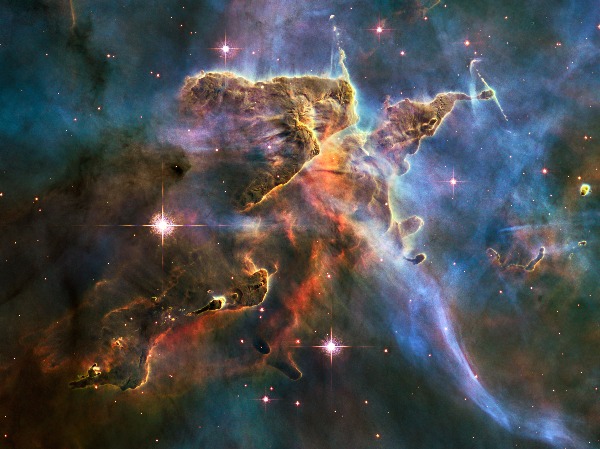

NASA illustration shows aesthetic close-up of cosmic clouds and stellar winds featuring LL Orionis, interacting with the Orion Nebula flow in this image released on February 4, 2013. Adrift in Orion's stellar nursery and still in its formative years, variable star LL Orionis produces a wind more energetic than the wind from our own middle-aged Sun. This picture is part of a large mosaic view of the complex stellar nursery in Orion, filled with a myriad of fluid shapes associated with star formation

A section of the Tarantula Nebula, located within the Large Magellanic Cloud (LMC), is seen in an undated NASA image taken with the Hubble Space Telescope. The LMC is a small nearby galaxy that orbits our galaxy, the Milky Way, and appears as a blurred blob in our skies, according to NASA.
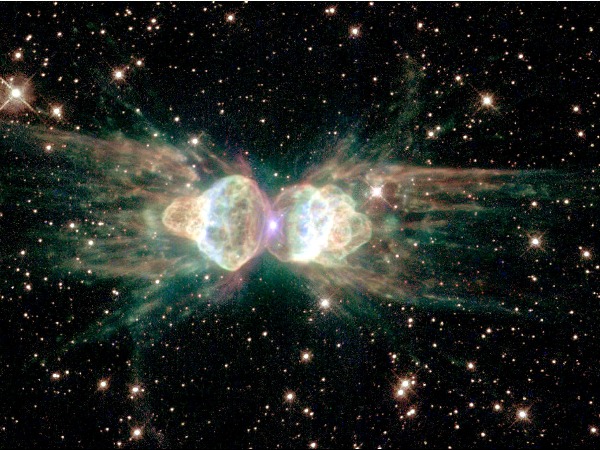
From ground-based telescopes, this cosmic object - the glowing remains of a dying, sun-like star - resembles the head and thorax of a garden-variety ant. This NASA/ESA Hubble Space Telescope image, released on February 1, 2001, of the so-called "ant nebula" (Menzel 3, or Mz3) shows even more detail, revealing the "ant's" body as a pair of fiery lobes protruding from the dying star.
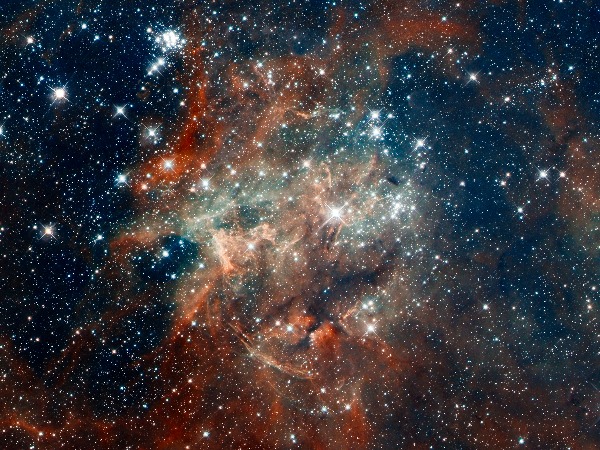
A NASA Hubble Space Telescope composite image shows star cluster NGC 2060, a loose collection of stars in 30 Doradus, located in the heart of the Tarantula Nebula 170,000 light-years away in the Large Magellanic Cloud, a small, satellite galaxy of our Milky Way, in this handout photo released on April 17, 2012. The Hubble telescope imaged 30 separate fields with its Wide Field Camera 3 and Advanced Camera for Surveys during October 2011. The star cluster contains a supernova that exploded about 10,000 years ago, blowing out gas surrounding it, according to NASA. This image is released as part of Hubble's 22nd anniversary. REUTERS/NASA/European Southern Observatory/Space Telescope Science
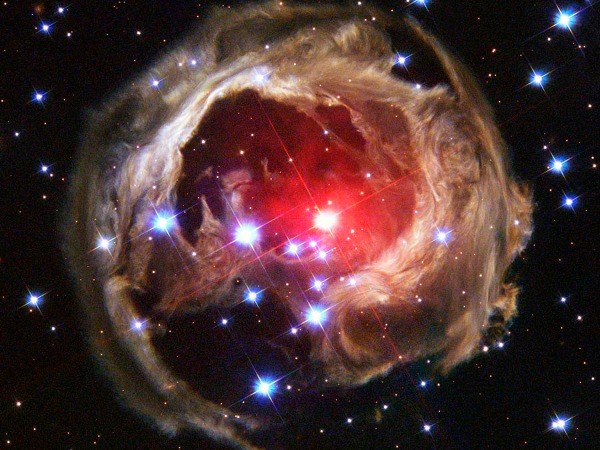
Star V838 Monocerotis's (V838 Mon) light echo, which is about six light years in diameter, is seen from the Hubble Space Telescope in this February 2004 handout photo released by NASA on December 4, 2011. Light from the flash is reflected by successively more distant rings in the ambient interstellar dust that already surrounded the star. V838 Mon lies about 20,000 light years away toward the constellation of Monoceros the unicorn. It became the brightest star in the Milky Way Galaxy in January 2002 when its outer surface greatly expanded suddenly.
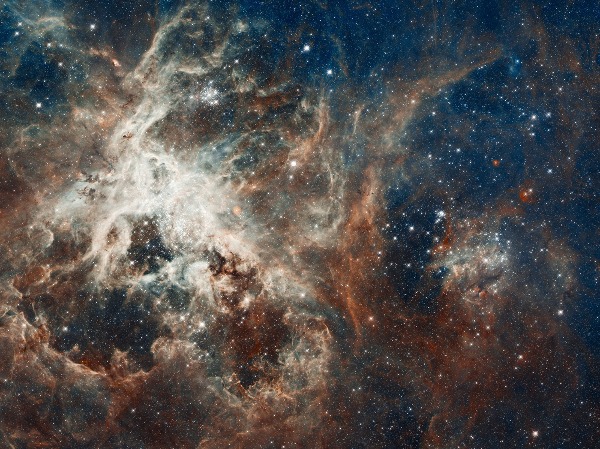
This new Hubble telescope image comprises one of the largest mosaics ever assembled from Hubble photos and includes observations taken by Hubble's Wide Field Camera 3 and Advanced Camera for Surveys released by NASA and the Space Telescope Science Institute (STScI) in Baltimore in celebration of Hubble's 22nd anniversary on April 17, 2012. Several million young stars are vying for attention in a new NASA Hubble Space Telescope image of a raucous stellar breeding ground in 30 Doradus, a star-forming complex located in the heart of the Tarantula nebula.
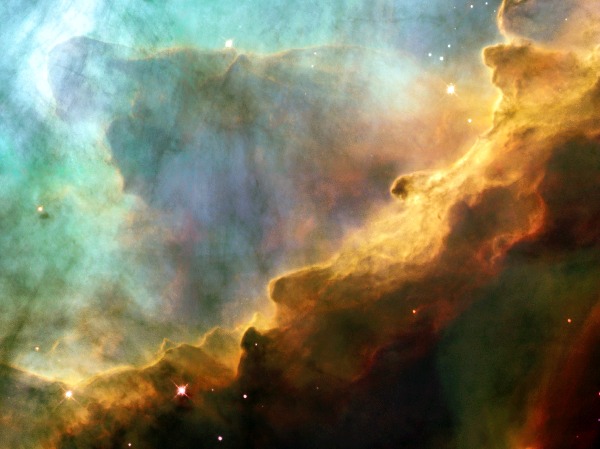
The photo, taken by NASA's Hubble Space Telescope, captures a small region within M17, a hotbed of star formation M17, also known as the Omega or Swan Nebula, is located about 5,500 light-years (1690 parsecs) from Earth in the constellation Sagittarius. The turbulent gases in this photo of Gaseous Nebula in the Milky Way Galaxy shows roughly 1.9.arcminutes (3.1 light-years or 0.95 parsecs) across. The image is being released to commemorate the 13th anniversary of Hubble's launch on April 24, 1990.
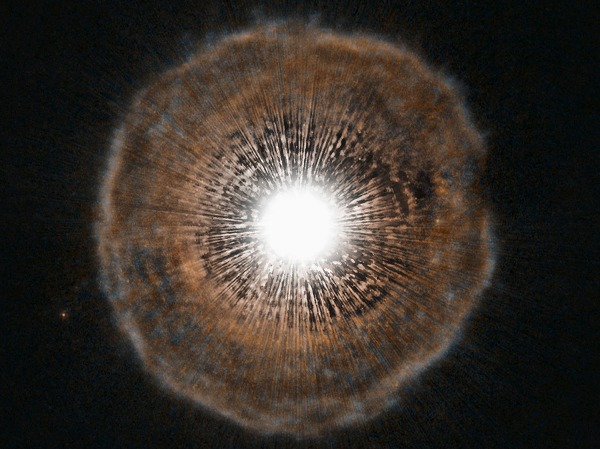
A NASA/ESA Hubble Space Telescope image released on July 7, 2012 shows U Camelopardalis, or U Cam for short, a star nearing the end of its life located in the constellation of Camelopardalis (The Giraffe), near the North Celestial Pole. As it begins to run low on fuel, it is becoming unstable. Every few thousand years, it coughs out a nearly spherical shell of gas as a layer of helium around its core begins to fuse. The gas ejected in the star's latest eruption is clearly visible in this picture as a faint bubble of gas surrounding the star. The shell of gas, which is both much larger and much fainter than its parent star, is visible in intricate detail in Hubble's portrait. While phenomena that occur at the ends of stars' lives are often quite irregular and unstable, the shell of gas expelled from U Cam is almost perfectly spherical. The image was produced with the High Resolution Channel of the Advanced Camera for Surveys.
